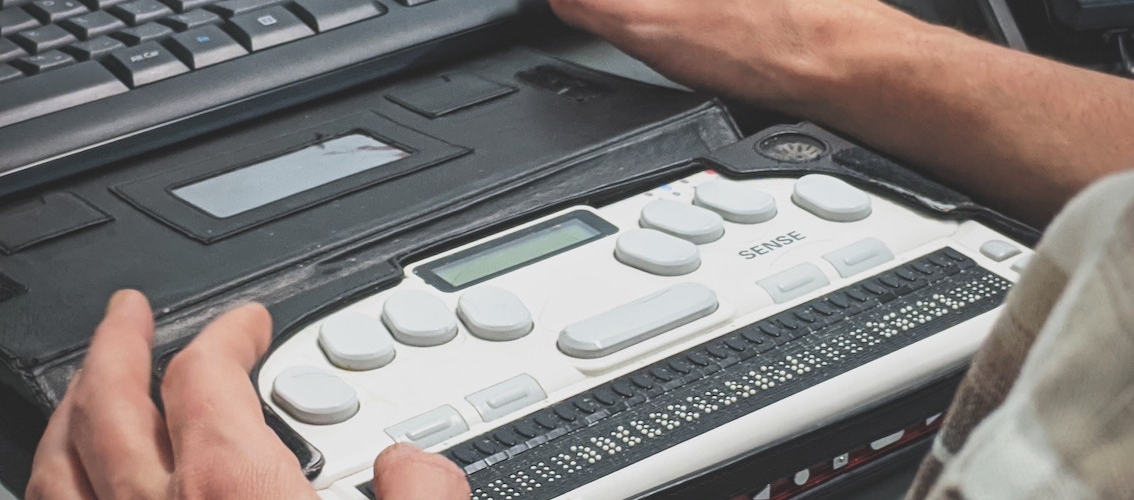The 5 best website accessibility checkers
Your website should be accessible to everyone. This means ensuring that people with disabilities can interact with, navigate, and consume your content.
Government organizations must comply with Section 508, legislation that requires federal agencies to make their information and technology accessible to people with disabilities. Though private businesses aren’t included in this law, it’s important for all organizations to follow web accessibility standards, so that everyone has equal access to information on the web.
To ensure your website is accessible to people with disabilities, try using a web accessibility checker. This online tool evaluates your website and identifies barriers that might prevent someone with a physical or cognitive disability from interacting with, navigating, or understanding your website. The checker reviews aspects of your pages, such as color contrast, font size, website structure, and keyboard functionality, and offers solutions to the issues it detects.
Using a web accessibility checker is a great starting place for determining where your website stands in terms of accessibility and identifying where you can make improvements. In fact, many web designers and developers turn to these tools when designing and building websites for their clients.
We asked industry experts to share their views on the best website accessibility checkers. Here are the top five.
1. Axe
Axe is considered one of the most in-depth checkers. It’s a browser add-on that not only evaluates your site but also provides helpful information on ways to fix the issues identified.
Natalie MacLess, an accessibility consultant at digitally (formerly Purple Pen Productions), says that, for each issue it detects, Axe conveniently links you to the relevant web content accessibility guideline in question. Another helpful feature, explains Mike Gilfillan, lead developer at Edge of the Web, is that it ranks the detected issues in order of severity, helping you prioritize which problems need to be fixed first.
2. Tota11y
Tota11y is regarded as the ideal beginner option. It visually conveys accessibility violations, helping make sense of the sometimes complex or vague standards. The tool provides easy-to-understand explanations, MacLess said, and it offers fixes for each issue it detects. It can also simulate the way a screen reader might interact with your page, allowing you to experience how a visually impaired user would consume your content.
3. Functional Accessibility Evaluator
The Functional Accessibility Evaluator (FAE) breaks down your website’s results into 12 categories: landmarks, headings, styles/content, images, links, tables, forms, widgets/scripts, audio/video, keyboard, timing, and site navigation. Each category provides a percentage that reflects performance status, i.e., warn, pass, or fail. “This helps the developer to focus on specific areas where improvement is required,” said Tim Uittenbroek, the founder of VPNMash.
4. AChecker
AChecker is an open-source accessibility checker that evaluates your content through your HTML code or URL. It identifies three areas of concern: known problems, likely problems, and potential problems. Potential problems are those that require a human to make the final call.
5. Wave
WAVE is available as a web app and a browser add-on. MacLess says, “It provides a handy outline of the webpage being tested to help you ensure the hierarchy of the page is correct and allows for easily toggling of CSS.” Acknowledging the value of the tool, Gilfillan also warns that it does require some technical knowledge to use, so it’s best suited for designers or developers.
Though these tools are helpful in measuring your website’s compliance, they do have their limitations. MacLess notes that even the best tools can catch only 20 to 30 percent of accessibility issues on a site. They often detect technical issues, but they can’t always evaluate meaning or intention or perceive the user experience in the same way as a human. That’s why it’s important to have an expert assess your website too.
Using one of the above website checker tools in combination with a human evaluator ensures you can identify roadblocks to accessibility, making sure your website reaches the widest possible audience.
For more information on web accessibility guidelines and Section 508 compliance, check out our complete guide.










Send Comment: